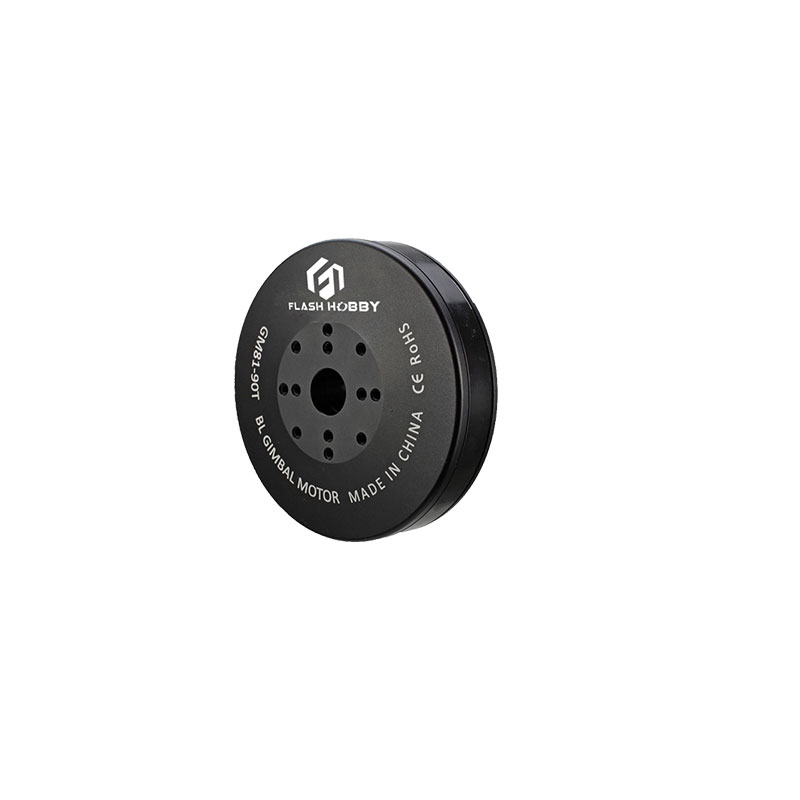Key features and functions of gimbal motors
2023-10-16
Gimbal motors, also known as brushless gimbal motors or brushless motors, are specialized electric motors designed for use in camera gimbals and other stabilizing systems. These motors play a crucial role in maintaining the stability and smoothness of the camera platform, allowing for steady and shake-free video and photography. Here are the key features and functions of gimbal motors:
Key Features:
1. Brushless Design: Gimbal motors are typically brushless, which means they have no physical brushes or commutators. This design results in reduced friction, longer lifespan, and less heat generation compared to brushed motors.
2. High Torque: Gimbal motors are designed to provide high torque at low speeds, allowing them to precisely control the orientation of the camera or other equipment.
3. Precision Control: These motors offer precise control over the camera's movements, ensuring that it stays level and steady, even in challenging conditions.
4. Compact Size: Gimbal motors are compact and lightweight, making them suitable for use in portable and handheld stabilizing systems.
5. Efficiency: They are energy-efficient, which is important for battery-powered gimbals where power consumption can affect operating time.
6. Low Noise: Gimbal motors are engineered for quiet operation, minimizing noise interference during video recording.
Functions:
1. Stabilization: The primary function of gimbal motors is to stabilize the camera or other equipment mounted on the gimbal. They counteract vibrations and unwanted movements, ensuring that the camera stays level and steady.
2. Smooth Motion: Gimbal motors enable smooth and fluid camera movements, allowing for cinematic shots and professional-quality video recording.
3. Three-Axis Control: Many gimbals use three gimbal motors, each responsible for controlling a specific axis (pitch, roll, and yaw). This three-axis control enables precise camera positioning in three-dimensional space.
4. Feedback Systems: Some gimbal motors incorporate feedback systems, such as encoders or sensors, to provide real-time data on the camera's position and orientation. This information is used to make immediate adjustments for stable footage.
5. Remote Control: Gimbal motors can be remotely controlled by the gimbal's operator, allowing for dynamic camera movements and adjustments during shooting.
Applications:
1. Cinematography and Videography: Gimbal motors are widely used in the film and video production industry to capture smooth and stable footage. They are employed in handheld gimbals, drone gimbals, and professional camera rigs.
2. Photography: Photographers use gimbal motors to stabilize cameras for capturing high-quality still images, especially in scenarios where a steady hand is crucial.
3. Action Cameras: Many action cameras are equipped with built-in gimbal motors to ensure stabilized video and image capture during activities like sports and adventure photography.
4. Surveillance and Inspection: Gimbal motors are used in aerial drones and ground-based robotic systems for surveillance, inspection, and monitoring applications.
5. Broadcasting: They are employed in broadcast cameras and equipment to deliver steady and professional-quality live broadcasts.
6. Virtual Reality (VR) and Augmented Reality (AR): Gimbal motors can be used to stabilize cameras and sensors in VR and AR systems, enhancing the user experience.
Gimbal motors are integral components in modern camera stabilization technology, allowing photographers and videographers to capture smooth, shake-free footage in a variety of settings and applications. They have become essential tools for achieving professional-quality results in the world of photography and videography.



